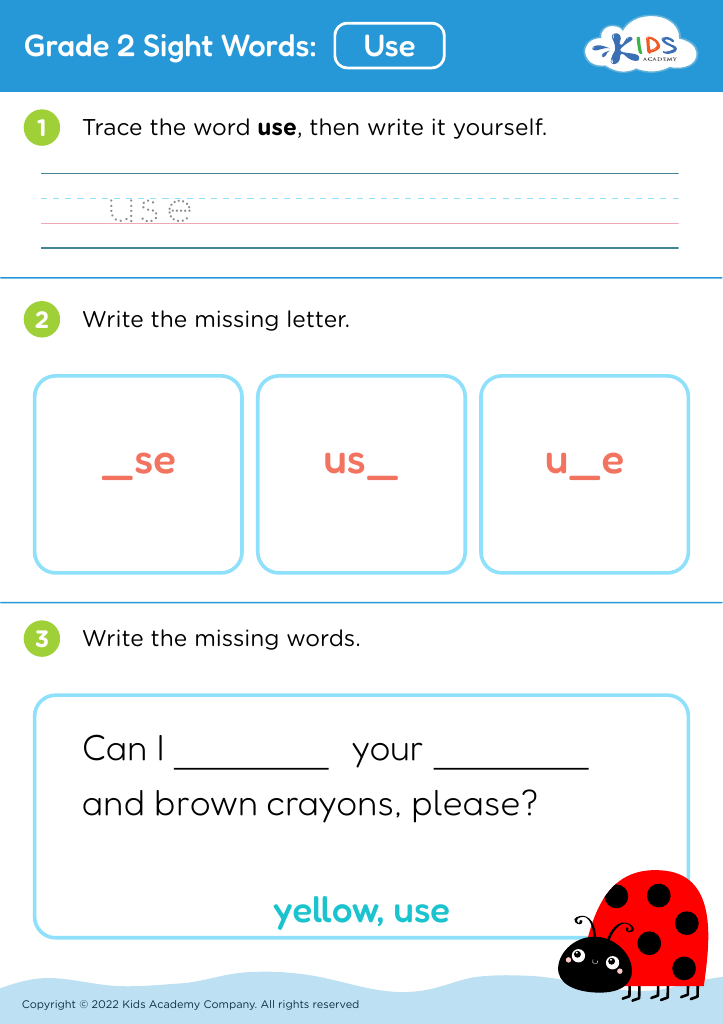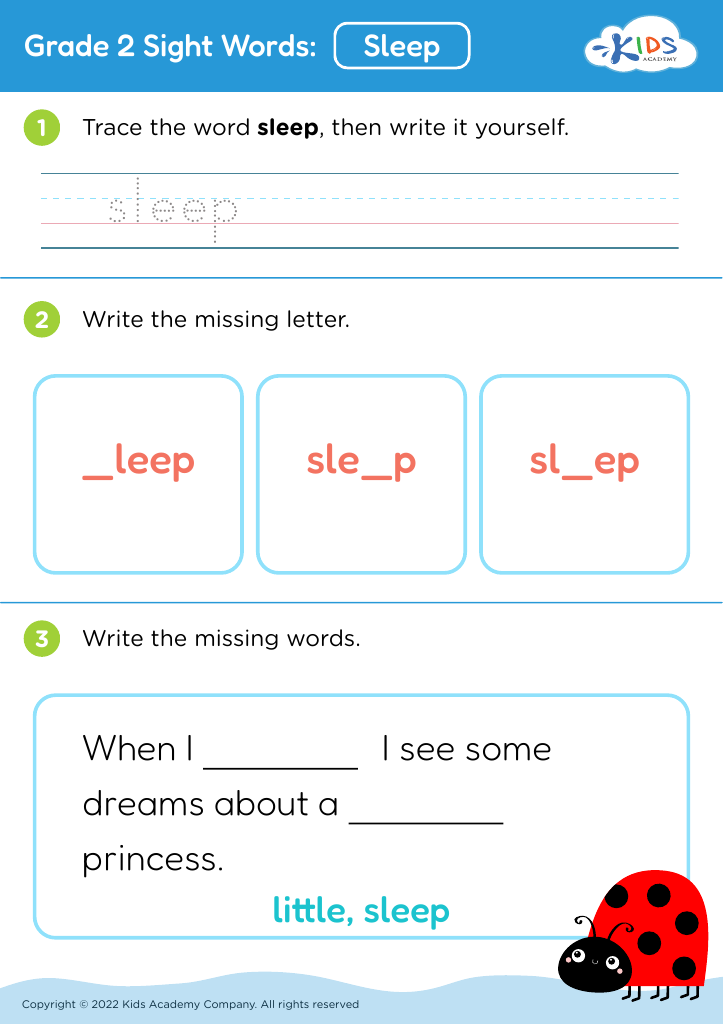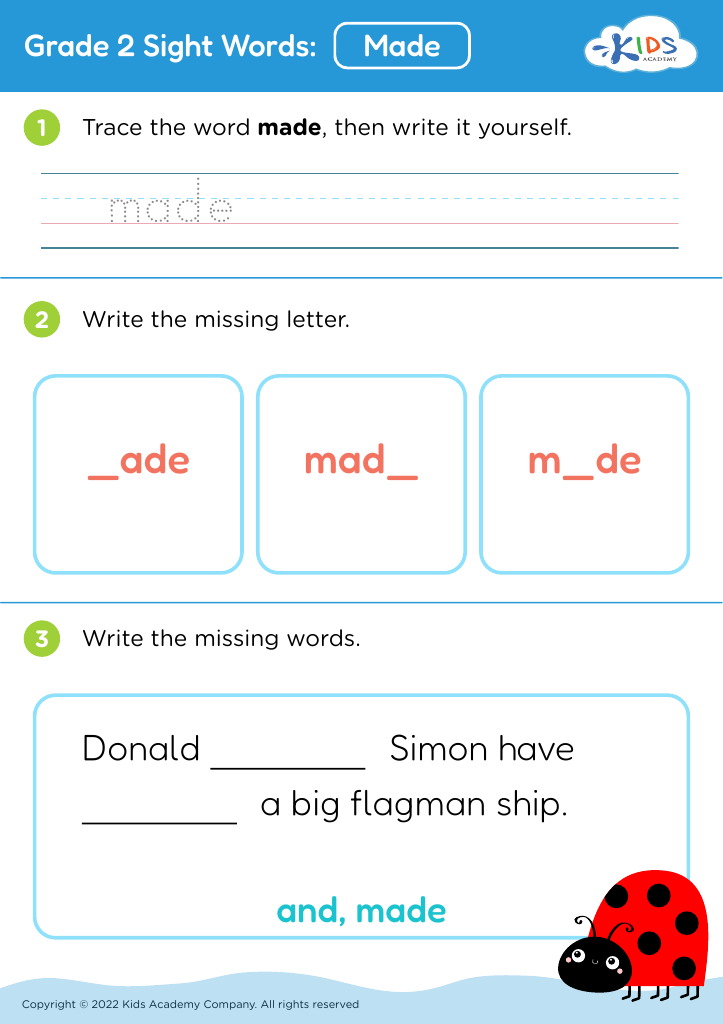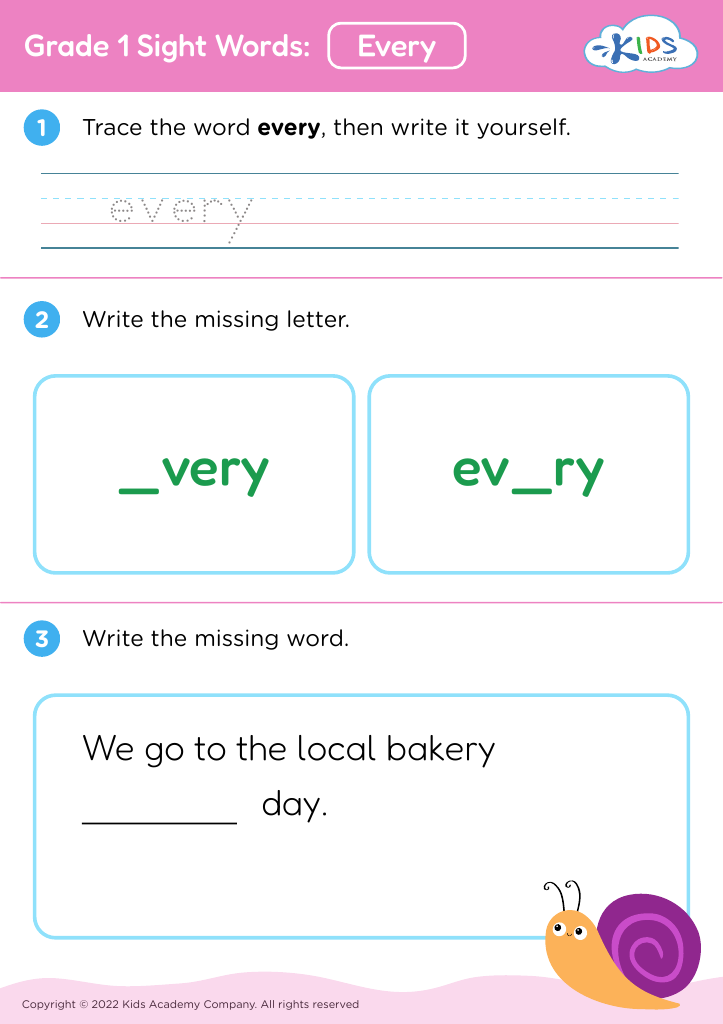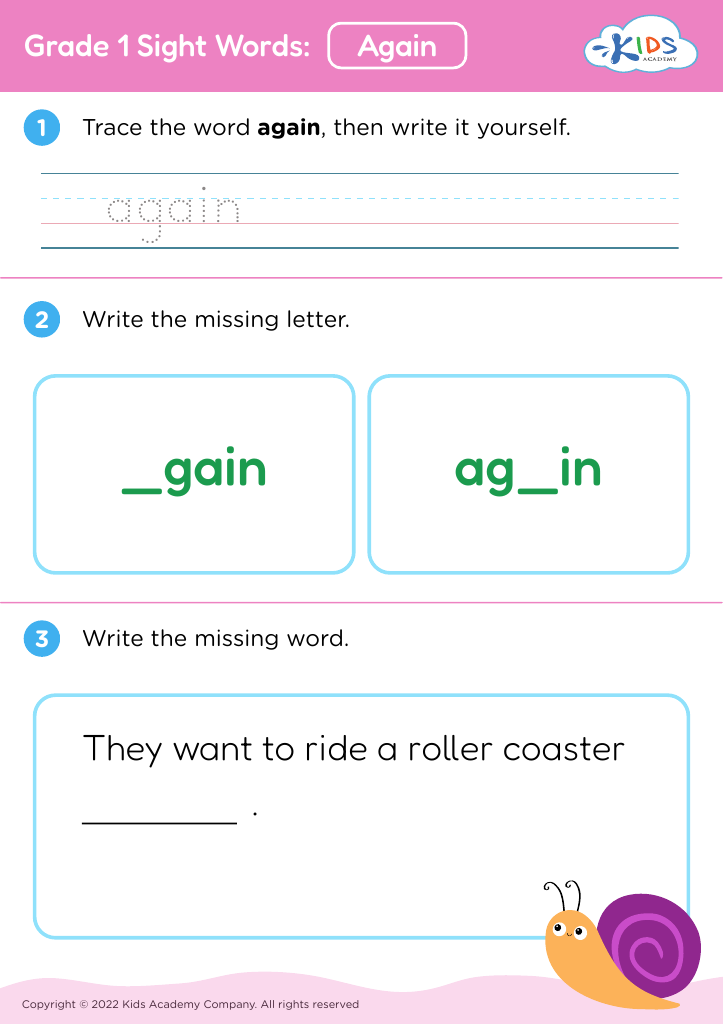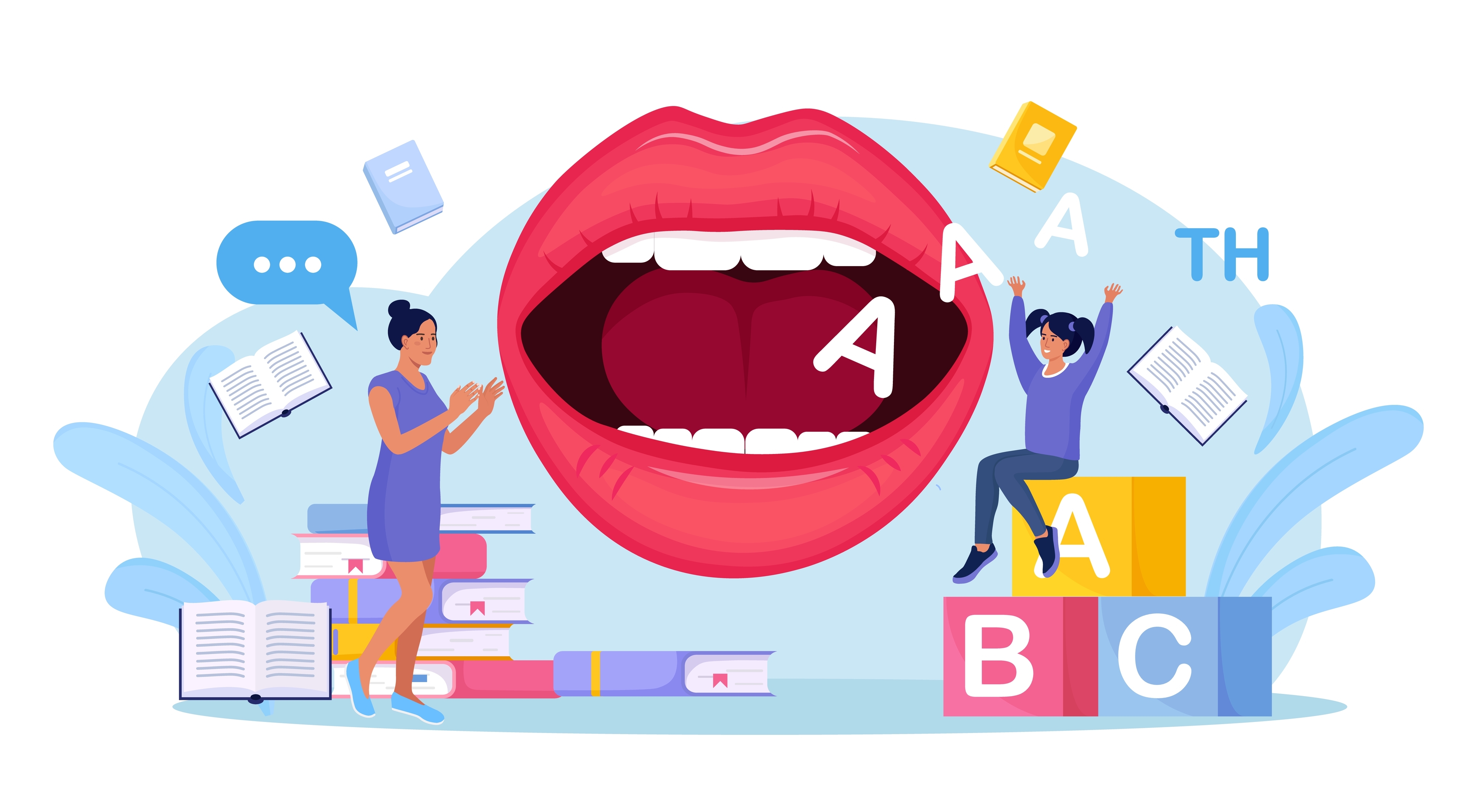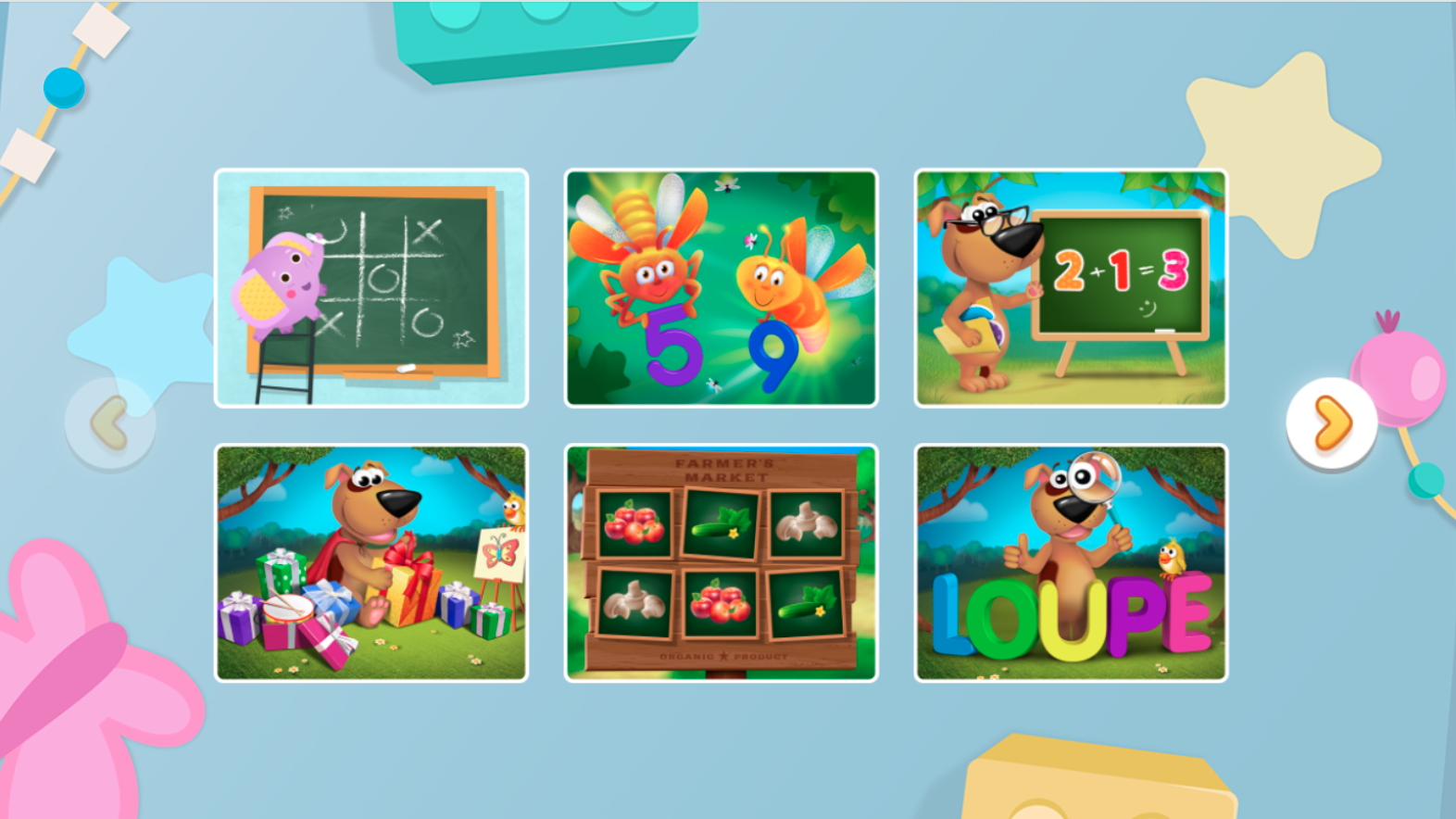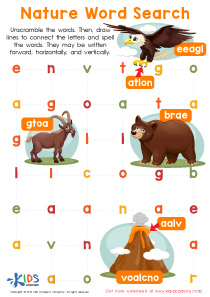Identifying shapes Sight Words Worksheets for Ages 7-8
5 filtered results
-
From - To
Discover our engaging "Identifying Shapes Sight Words Worksheets" for ages 7-8! These worksheets combine essential reading skills with shape recognition, helping young learners enhance their vocabulary as they explore geometric concepts. Each worksheet features a variety of activities designed to reinforce the relationship between sight words and visual shapes, promoting literacy and critical thinking. With colorful illustrations and fun, interactive exercises, students will enjoy learning while building confidence in their reading abilities. Perfect for classroom use or at-home practice, these worksheets provide a valuable resource for parents and educators to support children's learning journeys. Start shaping young minds today!
Identifying shapes and mastering sight words are fundamental skills for children aged 7-8 that significantly contribute to their overall development and academic success. Understanding shapes aids in enhancing spatial awareness, mathematical reasoning, and cognitive development. For example, recognizing shapes helps in problem-solving and geometry, skills that are crucial as children progress to more complex mathematical concepts.
Conversely, sight words are common words that children should recognize instantly, without needing to sound them out. Mastering sight words builds reading fluency, which in turn supports comprehension and fosters a love for reading. For children at this age, being proficient in sight words enables them to tackle more challenging texts, enhancing their vocabulary and overall literacy skills.
When parents and teachers prioritize these skills, they lay a solid foundation for lifelong learning. Engaging students with fun activities related to shapes and sight words encourages participation and boosts confidence, making learning a positive experience. Moreover, early competency in these areas can prevent academic struggles later on, allowing children to flourish as competent learners. Overall, acknowledging the importance of shape identification and sight words directly contributes to cognitive and linguistic growth, setting the stage for future educational success.

